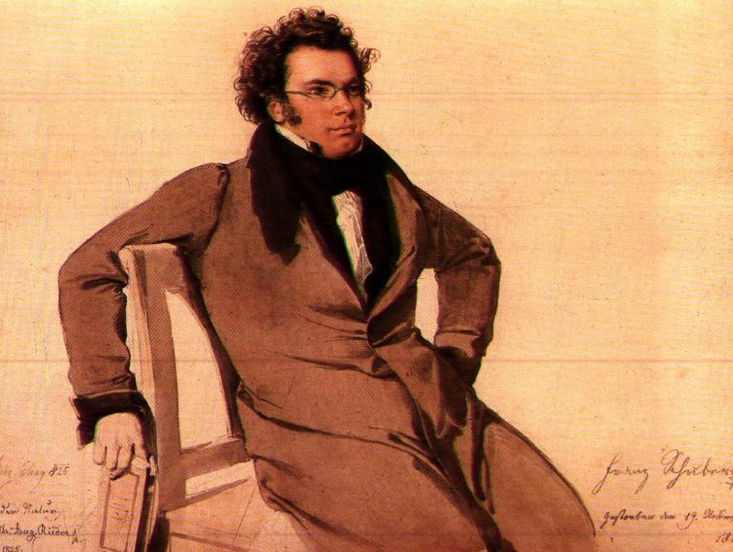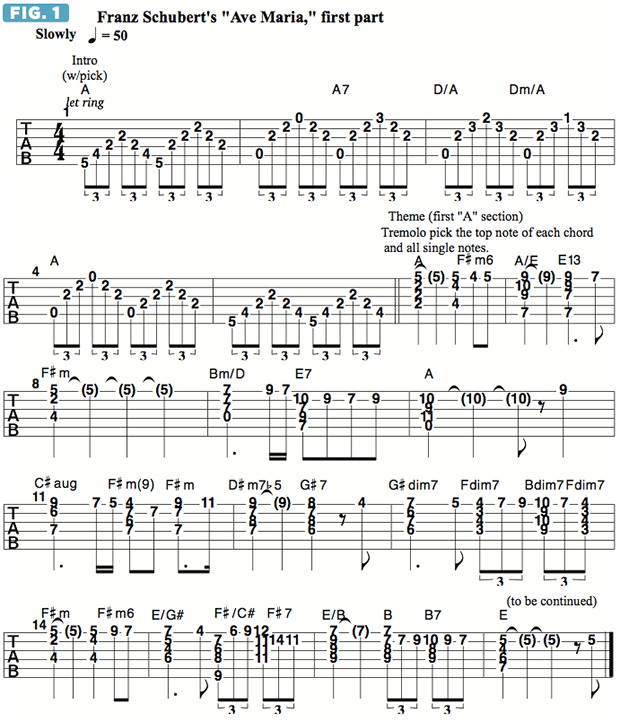String Theory with Jimmy Brown: Franz Schubert’s “Ave Maria” for Solo Guitar — Video

Here I present a beautifully uplifting solo instrumental guitar arrangement I crafted of brilliant classical-Romantic–era composer Franz Schubert’s (1797–1828) famous piece, “Ave Maria”—that sublimely inspiring slow song with stirring, innovative chord changes and angelic vocals, commonly sung in Latin by an operatic soprano with piano accompaniment and performed at weddings, funerals and religious Christmas events.
The piece has been recorded countless times, most notably by such renowned vocal divas as Maria Callas, Renée Fleming and Barbara Streisand and male opera stars like Enrico Caruso, Luciano Pavarotti and Andrea Bocelli, and has been featured in numerous films and TV shows, such as Fantasia, Young Frankenstein, Prizzie’s Honor, A Bronx Tale, Machete, The Hangover III, Northern Exposure, The West Wing, Boardwalk Empire, Six Feet Under, Teen Wolf, American Horror Story, Glee and many other big- and small-screen productions.
Composed in 1825, three years before Schubert’s untimely death (like Frédéric Chopin, his contemporary, Schubert had a short life and career but was incredibly prolific), the piece was originally titled “Ellens Dritter Gesang” (“Ellens Gesang III,” D. 839, Op. 52, No. 6), in English: “Ellen's Third Song,” and was set to Sir Walter Scott’s epic poem, The Lady of the Lake, loosely translated into German. The religious “Ave Maria” lyrics (the title means “Hail Mary” in Latin and is common in church music,) were later set to Schubert’s original music.
FIGURE 1 depicts the first 17 bars of my arrangement, which consists of a five-bar intro, followed by roughly the first half of the melody (the remainder to follow next month). The original score is in Bb, but my arrangement is in the more guitar-friendly key of A. We start out with slow, arpeggiated chords, played with a pick, to establish a relaxed tempo and serene mood before switching to a “minstrel”-style ballad accompaniment in bar 6, with a tremolo-picked melody woven into a progression of strummed chords.
For those new to tremolo picking, it means repeatedly picking the same note using fast alternate (down-up) picking. It’s employed by guitarists and mandolin players to emulate the sustained tones of the human voice or instruments like the trumpet, flute and violin.
Tremolo pick, from bar 6 on, the top note of each chord and all single melody notes while trying to allow the chords to ring as much as possible. You’ll need to let go of them in a few spots, as your fret hand shifts up or down to a different position while continuing the melody, such as in bars 13 and 15.
I suggest performing the arrangement on either an acoustic or a clean electric guitar and learning it first without any tremolo picking, which you can then add as a final step. Concert-hall reverb will add some lofty “air” to the sound of your performance and make the transitional single notes sound less “naked.”
Scrolling Tabs
You'll find the complete lesson video above and tabs at the bottom of this story. We also offer scrolling tabs for each figure; you'll find them below.
FIGURE 1

Get The Pick Newsletter
All the latest guitar news, interviews, lessons, reviews, deals and more, direct to your inbox!
Over the past 30 years, Jimmy Brown has built a reputation as one of the world's finest music educators, through his work as a transcriber and Senior Music Editor for Guitar World magazine and Lessons Editor for its sister publication, Guitar Player. In addition to these roles, Jimmy is also a busy working musician, performing regularly in the greater New York City area. Jimmy earned a Bachelor of Music degree in Jazz Studies and Performance and Music Management from William Paterson University in 1989. He is also an experienced private guitar teacher and an accomplished writer.


